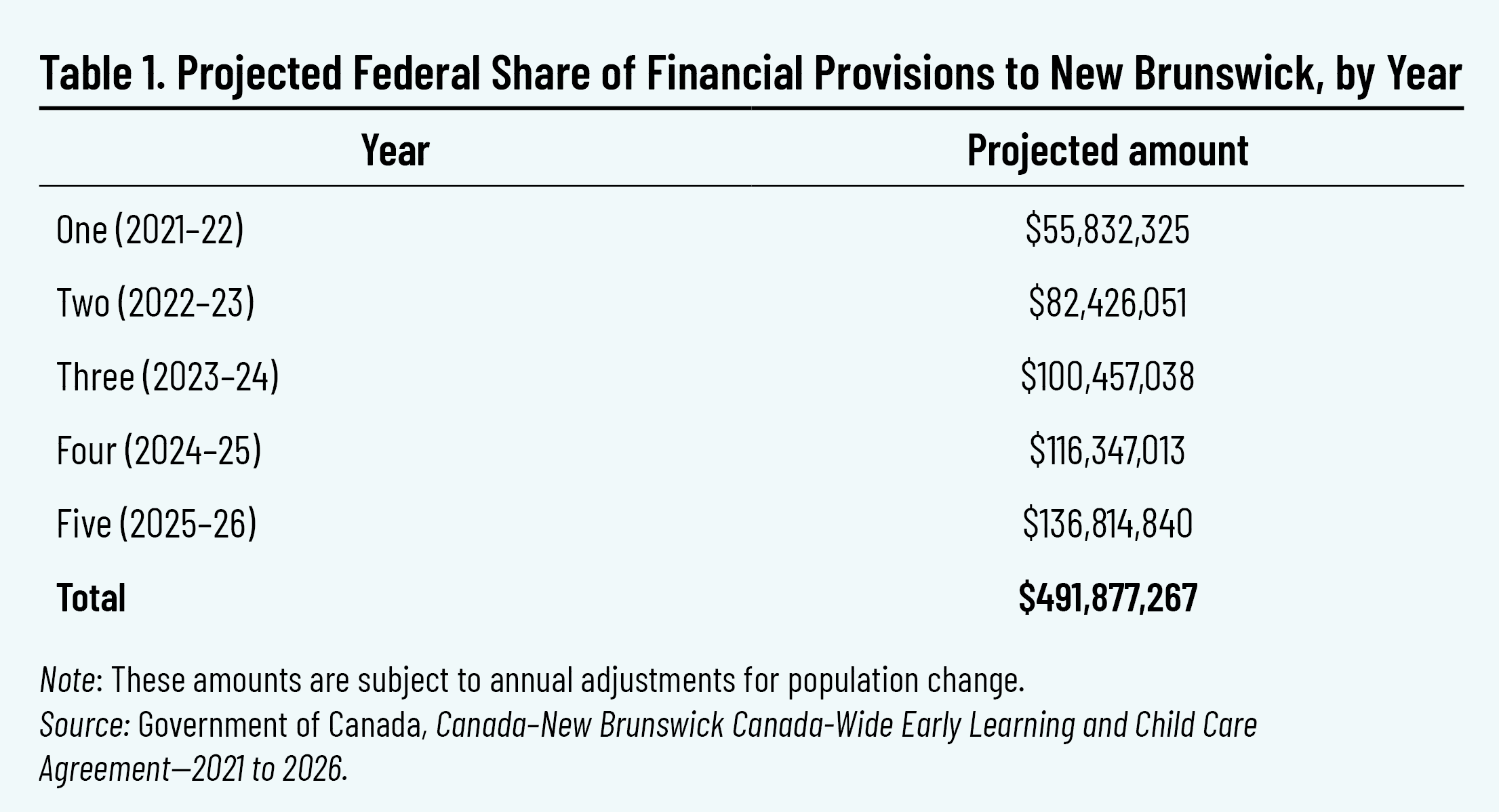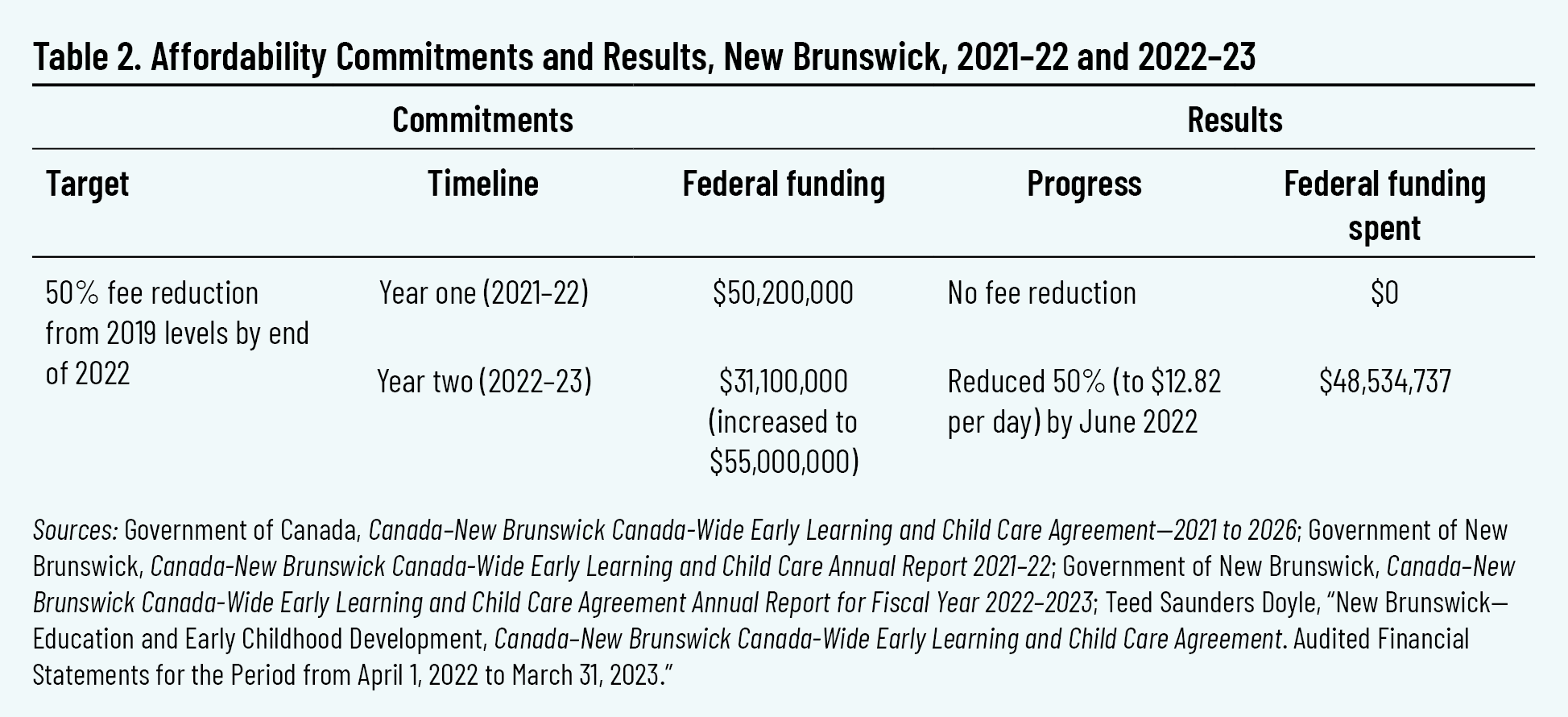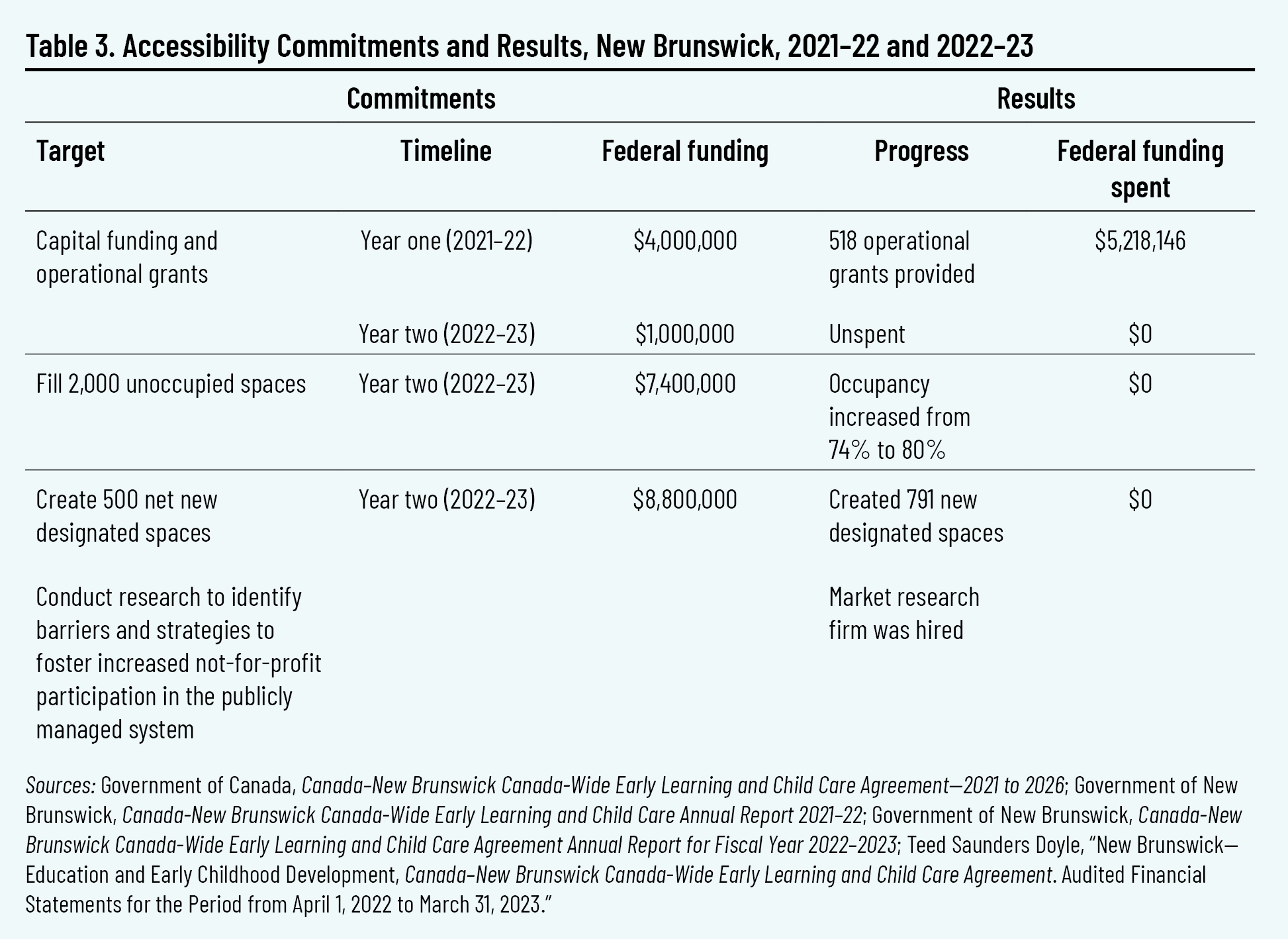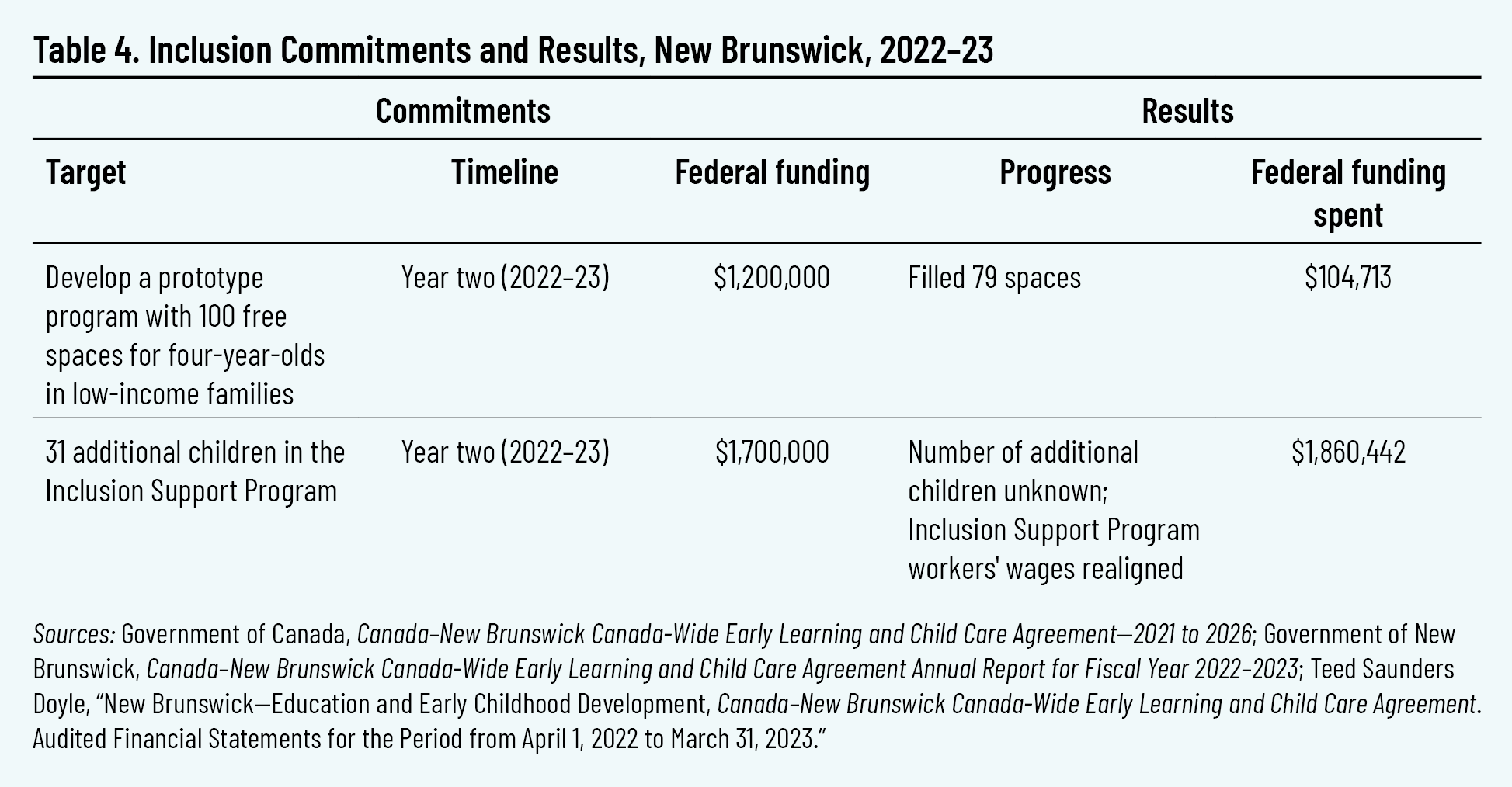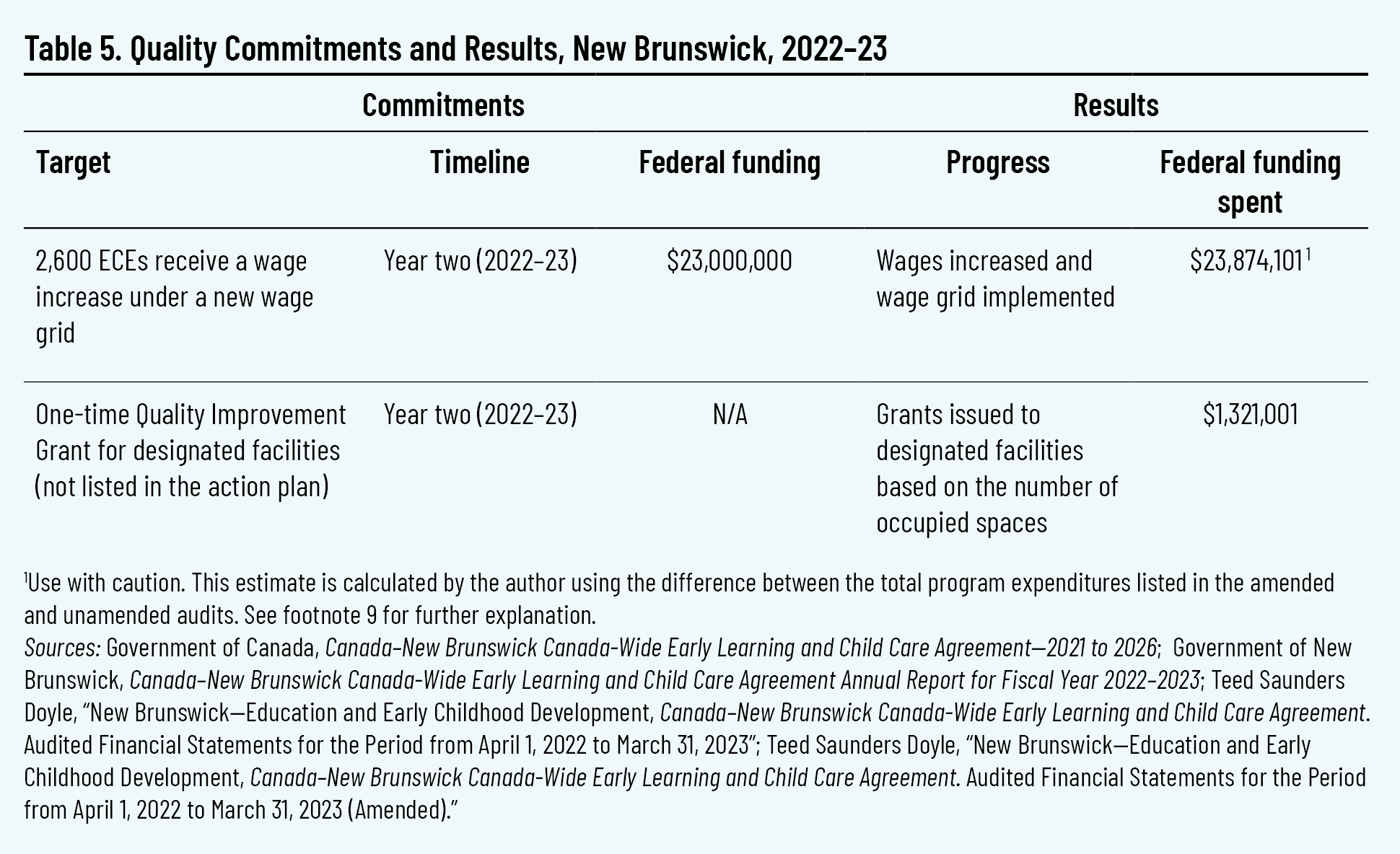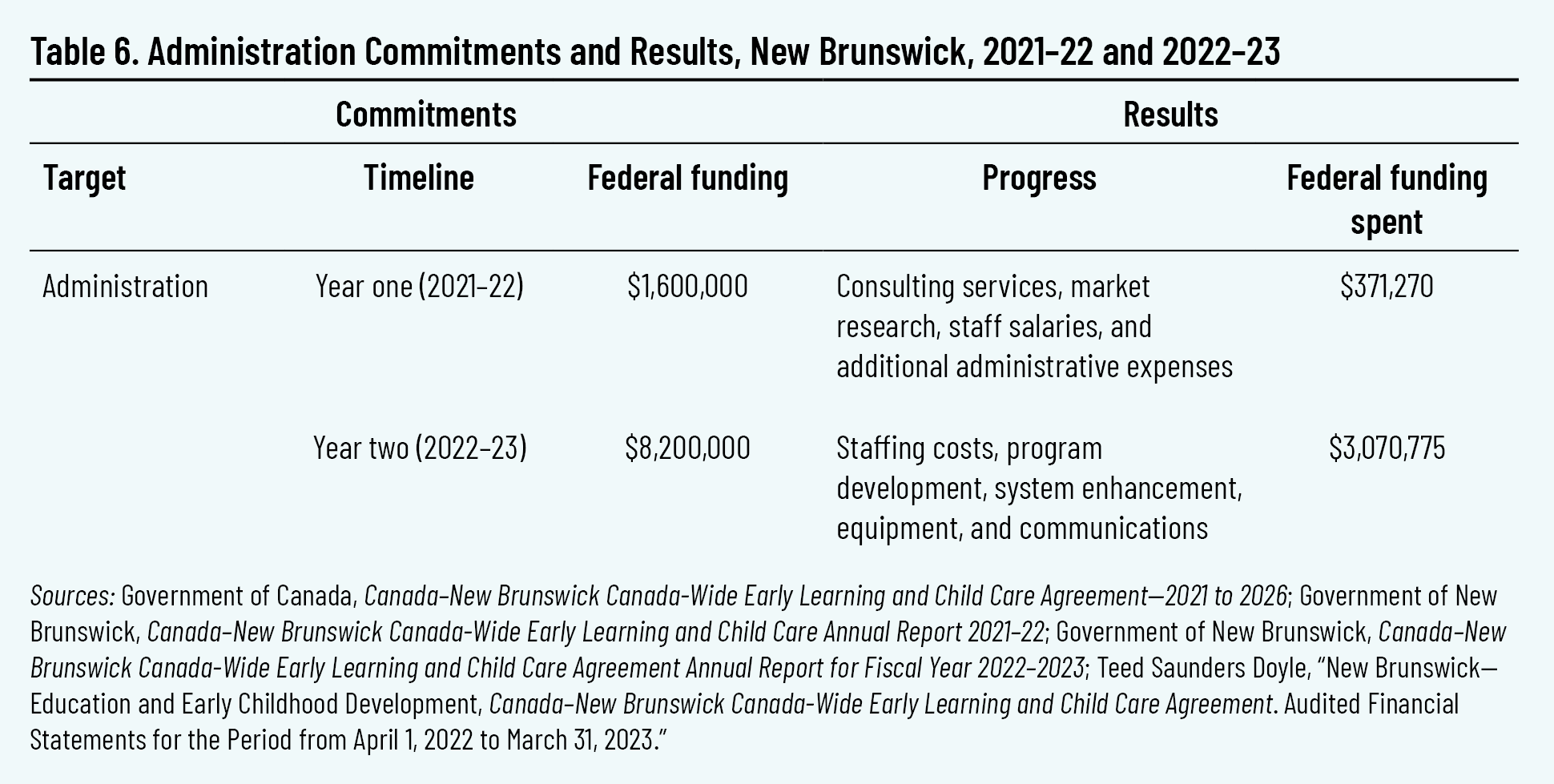Introduction
Canada’s federal budget for 2021 included a $27 billion commitment to establish a $10-a-day child care program within five years. Combined with additional funding, a total of $30 billion was committed in years one through five, with a projected annual cost of at least $9.2 billion in year five and later. The federal government then entered into negotiations with each province and territory (negotiating a unique, asymmetrical agreement with Quebec, which had a program already) to jointly determine the funding and goals. These negotiations resulted in a Canada-Wide Early Learning and Child Care Agreement with each province and territory (which we refer to as “the Agreement” in this brief). At the time of publication, eleven provinces and territories have renewed their agreements through fiscal year 2030–31.
Cardus conducted its own costing estimate in 2021 prior to the release of the Agreements, concluding that the federal government had underestimated the cost and complexity of implementing a national child care program. 1 1 A. Mrozek, P.J. Mitchell, and B. Dijkema, “Look Before You Leap: The Real Costs and Complexities of National Daycare,” Cardus, 2021, https://cardus.ca/research/family/reports/look-before-you-leap. Cardus is now studying the funds spent and goals achieved in each province and territory as data become available.
The Agreement with New Brunswick was signed on December 12, 2021. 2 2 Government of Canada, Canada–New Brunswick Canada-Wide Early Learning and Child Care Agreement—2021 to 2026 (December 2021), https://www.canada.ca/en/early-learning-child-care-agreement/agreements-provinces-territories/new-brunswick-canada-wide-2021.html.
This brief presents the results for year two for New Brunswick (fiscal year 2022–23, which is April 1, 2022 to March 31, 2023). Year one results are included in the tables for context, and the year one report can be found at cardus.ca.
Summary
During the first two years of the Agreement, the province received significantly more federal funding than it was able to spend.
Having signed the Canada-Wide Early Learning and Child Care Agreement with only a few months left in the first fiscal year, the province set modest targets for year one, but spent less than $6 million of the approximately $55 million in federal funding.
New Brunswick was able to carry over $50.30 million in unspent funds into year two. When added to the year-two allocation, the total amount of federal funding available under the Agreement in year two was $135.43 million, 3 3 The year-two allocation adjusted for population was $85.10 million. of which the province spent $78.77 million. With $56.67 million in surplus federal funding, New Brunswick secured an amendment to the Agreement to increase the percentage of unspent funds that could be carried over into year three, from 50 percent to 65 percent.
Despite the challenge in spending funds, the province reduced parent fees by 50 percent of 2019 fees months ahead of schedule. This was achieved through the introduction of the Parental Fee Grid and through the Parental Fee Subsidy.
The province implemented a six-month freeze on issuing new licences for designated providers, preparing for the introduction of the Early Learning and Child Care Preschool Designated Space Allocation Grid. The grid allocated the number of new spaces each region would be eligible to receive. Despite this freeze, and the fact that no Agreement funds were spent in year two on increasing access, New Brunswick reported creating 791 new designated spaces by the end of that year. This exceeded the target of 500 net new spaces in the first two years of the Agreement. The target was modest considering the five-year target of 3,400 new spaces by the end of the Agreement.
Efforts to make child care more inclusive in year two included the introduction of a prototype program to offer free care to four-year-olds from low-income families. The province filled 79 of the targeted 100 spaces. The province also adjusted wages for Inclusion Support Workers to be aligned with Early Childhood Educators.
In an effort to increase quality, New Brunswick introduced a wage grid for workers that incorporated an earlier wage increase, and offered a one-time Quality Improvement Grant.
Agreement at a Glance
Term: April 1, 2021, to March 31, 2026.
Federal Funding Estimate
Table 1 displays the projected federal share of financial provisions for each year of the Agreement.
Major Targets
- Reduce fees to 50 percent of the 2019 average fee by December 2022, and to an average of $10 a day by year five.
- Increase the number of regulated child care spaces from 47 percent to 59 percent coverage for children under age six by year five.
- Create 3,400 full-time-equivalent spaces by the end of year five.
Pre-Agreement Baseline Measures
- provincial child care budget of $115 million in 2019–20 4 4 Government of New Brunswick, Education and Early Childhood Development Annual Report 2019–2020 (2020), 31, https://www2.gnb.ca/content/dam/gnb/Departments/ed/pdf/Publications/annual-report-2019-2020.pdf.
- average parental fees of $33.25 a day as of 2019 5 5 Canada–New Brunswick Canada-Wide Early Learning and Child Care Agreement—2021 to 2026, annex 2.
- 15,023 full-time and part-time designated spaces, and 1,204 full-time and part-time non-designated licensed spaces, as of September 2021 6 6 Canada–New Brunswick Canada-Wide Early Learning and Child Care Agreement—2021 to 2026, annex 2, tables 2 and 3.
Agreement Targets and Progress
The Canada-wide Agreements share a similar structure, focusing on four priorities: affordability for parents, increasing access through space creation, making child care more inclusive, and improving the quality of care.
New Brunswick provided an action plan for the first two years of the Agreement (2021–22 and 2022–23). The tables shown here summarize the commitments made, the years in which targets are to be achieved, and the federal funding allocated to the targets. The tables also summarize the progress made toward the target and the funding spent on these efforts in years one and two. 7 7 Unless otherwise noted, the results shown are taken from the following sources: Government of New Brunswick, Canada–New Brunswick Canada-Wide Early Learning and Child Care Annual Report 2021–22, https://www2.gnb.ca/content/dam/gnb/Departments/eco-bce/Promo/early_childhood/elcc-agreement-annual-report.pdf; Government of New Brunswick, Canada–New Brunswick Canada-Wide Early Learning and Child Care Agreement Annual Report for Fiscal Year 2022–2023, https://www2.gnb.ca/content/dam/gnb/Departments/eco-bce/Promo/early_childhood/elcc-agreement-annual-report-2022-2023.pdf; Teed Saunders Doyle, “New Brunswick—Education and Early Childhood Development, Canada–New Brunswick Canada-Wide Early Learning and Child Care Agreement. Audited Financial Statements for the Period from April 1, 2022 to March 31, 2023”; and Teed Saunders Doyle, “New Brunswick—Education and Early Childhood Development, Canada–New Brunswick Canada-Wide Early Learning and Child Care Agreement. Audited Financial Statements for the Period from April 1, 2022 to March 31, 2023 (Amended).” The audited statements were acquired through Right to Information and Protection of Privacy requests.
Affordability
After the $50.2 million year-one affordability allocation went unspent, the province increased the year-two allocation from $31.1 million to $55.0 million. The province spent $48.5 million in year two on affordability targets.
The action plan targeted a fee reduction of 50 percent of 2019 fees by December 2022. The province reached this goal ahead of schedule, when a Parental Fee Grid was introduced in June 2022. The average daily fee for parents was reduced to $12.82, which was lower than the average fee listed in the Parental Fee Grid. The province achieved this feat through the Parental Fee Subsidy. Families with a gross annual income under $37,500 received no-fee care under the subsidy, while families with gross annual incomes between $37,501 and $80,000 had their fees partially reduced. The province reported that 4,174 children received the subsidy in year two, which was an increase of about 809 children over the previous year.
Accessibility
The action plan allocated a total of $17.2 million toward three initiatives intended to increase access to designated care. The three initiatives included capital funding and operational grants, reducing vacancies within designated facilities by filling 2,000 unoccupied spaces, and creating 500 new spaces for children ages 0 to 5 by the end of year two. The audited statements show the province did not spend any of the Agreement funding allocated to accessibility targets in year two.
While the annual Agreement progress report affirms the provincial commitment to capital funding and operational grants, the audited statement shows the $1 million allocation went unspent.
The province allocated $7.4 million toward filling 2,000 unoccupied designated spaces by the end of year two. The province reported an increase in the occupancy rate of designated spaces from 74 percent to 80 percent, but did not report the number of spaces. Utilizing the increase in occupancy and total number of designated spaces for children ages 0 to 5, we estimate the province reached about half of the occupancy target. As noted above, the accessibility allocation went unspent, according to audited statements.
The action plan allocated $8.8 million to create 500 spaces in designated facilities by the end of year two. With this allocation, the province committed to providing ten start-up grants for not-for-profit providers, and to conducting research to increase the participation of not-for-profit providers in the child care program. For the research portion of the target, the province hired a market research firm to identify barriers and strategies to increase the portion of not-for-profit providers. The project focused on ways to encourage for-profit providers to convert operations to the non-profit sector. It is unclear how this initiative was funded, as the audited statement suggests no Agreement funding was used.
The province targeted the creation of 500 net new spaces for children under age six by March 2023, and reported creating 791 new designated spaces over the first two years of the Agreement.
An important development with implications for space-creation targets occurred during year two. New Brunswick placed a moratorium on new licences for designated facilities from May 10, 2022, until October 31, 2022. The purpose of the moratorium was to pause space creation in order to develop criteria for new designated operators and to ensure federal funds would be directed primarily toward not-for-profit providers per federal government directive. In January 2023 the province unveiled the Early Learning and Child Care Preschool Designated Space Allocation Grid. The grid indicated the number of spaces each region would be eligible to receive. The province then issued a call for proposals to create new spaces to operators of designated facilities.
Finally, the province announced the creation of an Early Learning and Child Care Waitlist in February 2023. By December 2023 (year three), the waitlist had grown to an estimated 3,300 children. 8 8 L. Brown, “N.B. Government Hoping to Create 3,400 Child-Care Spaces by 2026 to Meet Demand,” CTV News, December 1, 2023, https://www.ctvnews.ca/atlantic/article/nb-government-hoping-to-create-3400-child-care-spaces-by-2026-to-meet-demand/.
Inclusion
The province allocated $2.9 million toward inclusion initiatives in year two.
A prototype program offering 100 free spaces for four-year-olds from low-income families used just $104,713 of the $1.2 million allocation for the initiative. New Brunswick reported filling 79 spaces, and noted that concerns regarding sharing private information prevented the province from filling all 100 spaces. The province indicated that the privacy issues would be resolved for the following year, and officials anticipated all 100 spaces would be filled.
The province intended to add 31 spaces for children requiring one-on-one support, for a total of 140 spaces. Although the provincial progress report provided details regarding the Inclusion Support Program that funds the full wages of Inclusion Support Workers, no update was provided on the number of children served. The province exceeded the $1.70 million allocation, spending $1.86 million, according to the audited statement.
Wages for Inclusion Support Workers were aligned with compensation for Early Childhood Educators in August 2022. This initiative was intended to improve worker retention.
New Brunswick entered an agreement with Connect Canada to deliver virtual inclusion training for the Francophone sector. The province also adopted the Pyramid Model, a program focused on children’s emotional and social needs. Pyramid Model training was to begin in year three (2023–24). The Connect Canada agreement and the Pyramid Model were not specifically included in the Agreement action plan, nor does it appear that Agreement funding was allocated to these initiatives.
Quality
Much of the work on increasing child care quality was funded through a separate workforce agreement and is not reviewed here. CWELCC Agreement funds were allocated toward the implementation of a wage grid, intended to increase wages for 2,600 Early Childhood Educators. The province allocated $23 million under the Agreement for this purpose.
Wages for workers in designated facilities were increased in April 2022, with the new rates incorporated in the wage grid implemented in November 2022. Wages for Entry Level workers increased 13 percent, and Level 1 educators received a 24 percent increase. The province credits the increase in compensation for reducing staff turnover from 36 percent in March 2022 to 24 percent by March 2023. The wage-rate increase and wage-grid implementation used an estimated $23.87 million in Agreement funding. 9 9 Use with caution. The total program expenditure recorded in the original audit was amended because the province had overcharged the CWELCC Agreement funding for the wage grid. Our estimate of the wage-rate increase and wage grid implementation CWELCC Agreement expenditure is calculated by the author using the difference between the total program expenditures listed in the amended and unamended audits. Note that the explanation of the adjustment in the amended audit lists the original total program expenditure as $32,760 more than the total program expenditure in the unamended audit. We are unable to account for this difference as no line-by-line detail is provided.
The Agreement action plan identified the need to improve training for workers, though no specific funding allocation was listed. The province continued to offer micro-credentialing for workers with at least three years of experience who have also completed the Introduction to Early Childhood Education course. This program assists workers in earning a certificate while continuing to work in child care settings.
The province also reported the continuation of partnerships between Collège communautaire du Nouveau-Brunswick and New Brunswick Community College to increase the number of people completing one-year certificates.
Although not listed in the action plan, the province offered operators of designated facilities a one-time quality grant. Operators could receive $250 for each occupied preschool space. If the space included meals, the grant was increased to $375 per occupied preschool space. The province spent $1.32 million on the Quality Improvement Grants.
Administration
The province spent $3.07 million of the $8.20 million allocation on administrative costs. Funding was allocated to staffing costs, program development, system enhancement, equipment, and communications.
Legislative and Policy Changes
After amendments were made to the Early Childhood Services Act, the province initiated a six-month freeze on issuing designated facility licences, as noted above. Further amendments were made to the Act in October 2022, removing the permanent residency requirement for recipients of the parental subsidy. The province made this amendment to accommodate families from Ukraine and to help international families that had been recruited to the province for work.
In November 2022, the province adopted policy 901, Space Allocation for Designated Early Learning and Child Care Facilities. The purpose of the policy was to guide the distribution of new designated spaces across the province, and to adhere to the federal government’s preference for not-for-profit facilities.
Finally, the province amended the Agreement with the federal government to increase the carry-over amount of unspent funds from year two into year three. The carry-over amount was increased from 50 percent to 65 percent.
Additional Observations
Although parent fees were reduced ahead of schedule, some child care operators felt the province did not sufficiently communicate changes in a timely manner. Multi-site operator Cheryl Lewis expressed her frustration when she told CBC News, “We’re only given things weeks before. We have no lead time, no communication.” 10 10 J. Gill, “Happy Parents, Stressed Daycare Operators on First Day of Half-Price Child Care,” CBC News, June 1, 2022, https://www.cbc.ca/news/canada/new-brunswick/50-percent-daycare-spaces-1.6474009.
As with other provinces, lowering parent fees increased demand. Saint John child care operator Heather Hamilton suspected unlicensed providers would not be able to compete and would close, increasing demand for designated spaces. “Unfortunately, some of those folks are going to close . . . but the problem now is we don’t have enough spaces anywhere in the province,” she told CBC News in June 2022. 11 11 Gill, “Happy Parents.”
Another challenge for operators of designated centres was that in 2018, prior to the Agreement, the province reduced parent fees and froze rates. Rates had not been increased since 2018. To compensate for increasing costs and inflation, many designated operators reduced the number of infant spaces they offered. Providing infant care is more costly than caring for older children. Jean Robinson, president of the Early Childhood Care and Education Association noted that operators “lose hundreds of dollars a week welcoming babies into the centre.” 12 12 “Shortage of Daycare Spaces for Babies Major Barrier for Return to Work, Mother Says,” CBC News, November 14, 2022, https://www.cbc.ca/news/canada/new-brunswick/childcare-parental-leave-maternity-paternity-1.6650731.
The province responded to these concerns by announcing an 8 percent funding increase for designated facilities per occupied space starting in year three (April 1, 2023). While operators welcomed the news, they quickly determined the 8 percent increase would be largely consumed by a 7.3 percent minimum wage increase scheduled to begin the same day. Operator Erin Schryer explained to CBC News, “I know all small businesses are going to feel the pinch of minimum wage increasing a dollar on April 1, but in our sector, we don’t have control over our revenue. The government has capped our fees.” 13 13 M. Urquhart, “Millions More Given for Daycare in N.B.—and Immediately Eaten Up by Minimum Wage Increase,” CBC News, March 8, 2023, https://www.cbc.ca/news/canada/new-brunswick/early-daycare-funding-government-1.6772271.


